Not every advance in electric-vehicle technology takes place inside the sterile calm of a research laboratory.
BMW AG, Volkswagen AG’s (VW) Audi and a Silicon Valley-based battery maker are helping push the boundaries with electric-powered race cars that whiz through Saudi Arabia, New York, London and Seoul at speeds topping 270kph.
Breakthroughs made by competitors in Formula E, starting its sixth season this week, are being incorporated into family sports utility vehicles (SUVs) and sedans — and even India’s electric rickshaws — as manufacturers seek to improve and extend their electric lineups, while nations gradually phase out gas guzzlers.
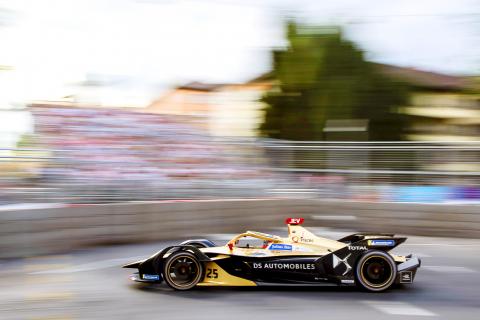
Photo: EPA-EFE
More powerful batteries and better motors, energy-management software and braking systems are all being transferred from the racetrack to the showroom.
“What we are doing in Formula E is highly relevant back on the road,” said Dilbagh Gill, chief executive officer and team principal of India’s Mahindra Racing, the motorsport unit of Mahindra & Mahindra Ltd. “We are able to come in and help them immediately in improving the product.”
Formula E, which began in 2014 with an E-Prix in Beijing, has 12 teams, almost all of which involve automakers producing or developing battery-powered vehicles for consumers, such as Nissan Motor Co and Tata Motors Ltd’s Jaguar brand.
VW’s Porsche and Daimler AG’s Mercedes-Benz brand are new participants in the 14-race season that opened on Friday in Saudi Arabia. The schedule runs through July, concluding with the two-day London E-Prix.
Last season’s champion was DS Techeetah, the Chinese-owned team of PSA Group’s DS Automobiles. Its DS E-Tense FE20 machine can accelerate from zero to 100kph in 2.8 seconds.
DS Automobiles is taking the power train — parts including the motor and inverter — from its Formula E entry and putting it inside a concept car called the DS X E-Tense. It also plans to use the same operating software across its planned range of electric passenger vehicles.
PSA Group, also home to the Peugeot and Citroen brands, is targeting a fully electrified fleet by 2025.
“The cars that win in Formula E are the most energy efficient, which is largely driven by software,” Paris-based DS Automobiles said. “Everything we do in Formula E with algorithms and software we try to replicate in series production.”
Rules intended to limit costs for teams and keep the series competitive mean racers use a standardized lithium-ion battery manufactured by a unit of Newark, California-based Lucid Motors Inc.
During the first four seasons of Formula E, drivers needed to change vehicles in the middle of a race — leaping from one cockpit into another — because the power packs could not complete a whole event, which typically lasts about 45 minutes.
Lucid’s batteries, introduced last season, eliminate the need for that switch.
“The real reason we are doing this is to demonstrate that we have world-class technology, which will find its way into our forthcoming road car,” Lucid chief executive officer Peter Rawlinson said.
The company plans to start producing its Lucid Air sedan in Arizona next year, boasting of a range of more than 644km and a speed exceeding 322kph.
Lucid’s Formula E batteries pack in more energy than alternatives that are commercially available for regular vehicles, said James Frith, a London-based analyst for BloombergNEF.
“If Lucid can transfer this technology to commercial electric vehicles, it could give them a real advantage,” he said.
Another key focus for Mahindra, DS Techeetah, Audi and the others is finding the best way to slow a vehicle down.
Since most vehicles lose energy as heat when a driver hits the brakes and causes friction, electric race cars use regenerative braking systems. In effect, a vehicle’s motor goes into reverse to slow the wheels and act as a generator to send power back into the battery.
The technology would help boost driving range, meaning passenger vehicles could use smaller batteries, Audi Sport ABT Schaeffler team principal Allan McNish said.
“Regenerating energy is going to be a key factor for the development of road cars,” said McNish, a former Formula One driver and a three-time winner of the 24 Hours of Le Mans endurance race.
For Nissan, the technology transfer goes both ways, spokeswoman Azusa Momose said.
Racing engineers working with the Nissan e.dams team are drawing on the company’s experience developing the electric Leaf hatchback.
“They share the same DNA,” Momose said in an e-mail.
Formula E cars are at the leading edge of energy management and power train development, she said.
Yet not all the gains are connected with technology or software.
Mumbai-based Mahindra plans to share racers’ cockpit tips with India’s auto rickshaw drivers to help them extend their battery’s range between refills.
India is home to about 1.5 million battery-powered, three-wheeled rickshaws. Mahindra is among the manufacturers of electric versions.
“As soon as they improve range, their earning capacity improves,” Gill said.
Putting high-speed electric vehicless onto circuits using regular city streets is considered another major benefit to the racing series, helping lift the profile of the battery-powered sector in key consumer markets.
Formula E races last season drew more than 400,000 spectators and a cumulative television audience of 411 million people, the series said in September.
Last season’s racers zipped along Brooklyn’s Clinton Wharf and Hong Kong’s Victoria Harbour. This season, competitors are to loop around the National Monument in Jakarta, and, in the UK, teams are to tackle a circuit that weaves inside the ExCeL London exhibition center and then back outside onto the city’s Royal Docks.
“You are racing in the heart of cities, and that’s where electric vehicles will be driven,” McNish said. “You are effectively taking your product to the people.”
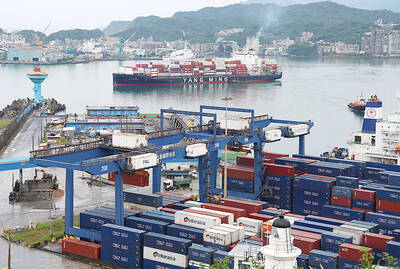
Taiwan’s exports soared 56 percent year-on-year to an all-time high of US$64.05 billion last month, propelled by surging global demand for artificial intelligence (AI), high-performance computing and cloud service infrastructure, the Ministry of Finance said yesterday. Department of Statistics Director-General Beatrice Tsai (蔡美娜) called the figure an unexpected upside surprise, citing a wave of technology orders from overseas customers alongside the usual year-end shopping season for technology products. Growth is likely to remain strong this month, she said, projecting a 40 percent to 45 percent expansion on an annual basis. The outperformance could prompt the Directorate-General of Budget, Accounting and
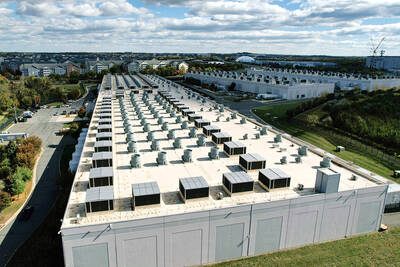
The demise of the coal industry left the US’ Appalachian region in tatters, with lost jobs, spoiled water and countless kilometers of abandoned underground mines. Now entrepreneurs are eyeing the rural region with ambitious visions to rebuild its economy by converting old mines into solar power systems and data centers that could help fuel the increasing power demands of the artificial intelligence (AI) boom. One such project is underway by a non-profit team calling itself Energy DELTA (Discovery, Education, Learning and Technology Accelerator) Lab, which is looking to develop energy sources on about 26,305 hectares of old coal land in
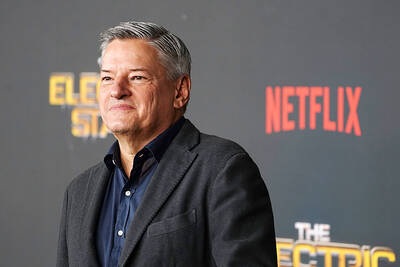
Netflix on Friday faced fierce criticism over its blockbuster deal to acquire Warner Bros Discovery. The streaming giant is already viewed as a pariah in some Hollywood circles, largely due to its reluctance to release content in theaters and its disruption of traditional industry practices. As Netflix emerged as the likely winning bidder for Warner Bros — the studio behind Casablanca, the Harry Potter movies and Friends — Hollywood’s elite launched an aggressive campaign against the acquisition. Titanic director James Cameron called the buyout a “disaster,” while a group of prominent producers are lobbying US Congress to oppose the deal,
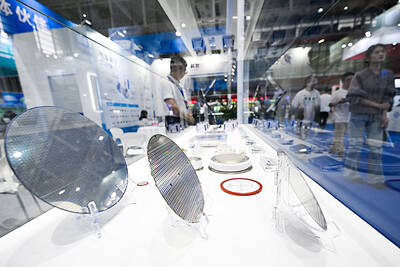
Two Chinese chipmakers are attracting strong retail investor demand, buoyed by industry peer Moore Threads Technology Co’s (摩爾線程) stellar debut. The retail portion of MetaX Integrated Circuits (Shanghai) Co’s (上海沐曦) upcoming initial public offering (IPO) was 2,986 times oversubscribed on Friday, according to a filing. Meanwhile, Beijing Onmicro Electronics Co (北京昂瑞微), which makes radio frequency chips, was 2,899 times oversubscribed on Friday, its filing showed. The bids coincided with Moore Threads’ trading debut, which surged 425 percent on Friday after raising 8 billion yuan (US$1.13 billion) on bets that the company could emerge as a viable local competitor to Nvidia